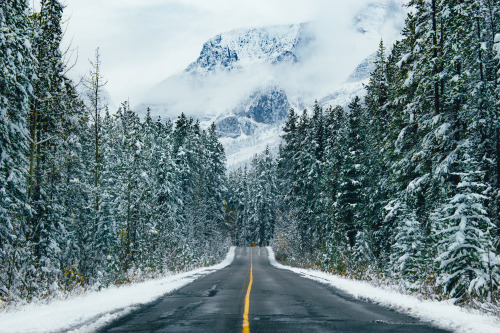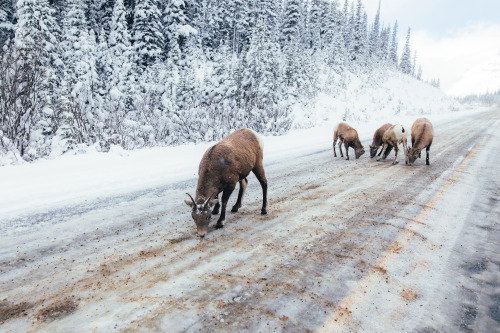Wifi Evolve To LiFi
Wifi evolve to LiFi
post by worl of facts
Li-Fi Is The New Insanely Fast Wireless Internet

Wi-Fi has revolutionized the experience of connecting online, but it has already been one-upped. The radiowave technology may be soon replaced with Li-Fi, the wireless internet alternative that is 100 times faster than the Wi-Fi we use today.
Keep reading
More Posts from F-taser-blog and Others
Amazing.
The Moon Just Photobombed NASA’s Solar Dynamics Observatory
On May 25, 2017, the moon photobombed one of our sun-watching satellites by passing directly between the satellite and the sun.

The Solar Dynamics Observatory, or SDO, orbits Earth and watches the sun nearly 24/7 — except when another body, like the moon, gets in the way. These lunar photobombs are called transits, the generic term for when any celestial body passes in front of another.
Transits are one way we detect distant worlds. When a planet in another star system passes in front of its host star, it blocks some of the star’s light so the star appears slightly dimmer. By monitoring changes in a star’s light over time, scientists can deduce the presence of a planet, and even determine what its atmosphere is like. This method has been used to discover thousands of planets, including the TRAPPIST-1 planets.

SDO sees lunar transits about twice a year, and this one lasted about an hour with the moon covering about 89 percent of the sun at the peak of its journey across the sun’s face.
When they’re seen from Earth, we call lunar transits by another name: eclipses.

Solar eclipses are just a special kind of transit where the moon blocks all or part of our view of the sun. Since SDO’s view of the sun was only partially blocked, it saw a partial eclipse. Later this year, on Aug. 21, a total eclipse will be observable from the ground: The moon will completely block the sun’s face in some parts of the US, creating a total solar eclipse on a 70-mile-wide stretch of land, called the path of totality, that runs from Oregon to South Carolina.
Throughout the rest of North America — and even in parts of South America, Africa, Europe and Asia — the moon will partially obscure the sun, creating a partial eclipse. SDO will also witness this partial eclipse.

Total solar eclipses are incredible, cosmic coincidences: The sun is about 400 times wider than the moon, but it also happens to be 400 times farther away, so the sun and moon appear to be the same size in our sky. This allows the moon to completely block the sun when they line up just right.

Within the path of totality, the moon completely obscures the sun’s bright face, revealing the comparatively faint corona — the sun’s pearly-white outer atmosphere.

It’s essential to observe eye safety during an eclipse. You must use proper eclipse glasses or an indirect viewing method when any part of the sun’s surface is exposed, whether during the partial phases of an eclipse, or just on a regular day. If you’re in the path of totality, you may look at the eclipse ONLY during the brief moments of totality.

A total solar eclipse is one of nature’s most awe-inspiring sights, so make your plans now for August 21! You’ll also be able to see the eclipse cross the country that day through the eyes of NASA – including views of the partial eclipse from SDO – on NASA TV and at nasa.gov.
Learn more about the August eclipse — including where, when, and how to safely see it — at eclipse2017.nasa.gov and follow along on Twitter @NASASun.

Nikola Tesla once paid an overdue hotel bill with a ‘working model’ of his 'death beam’. He warned the staff never to open it, describing it as a war-ending particle weapon that could stop invading armies and make warfare pointless. After his death in 1943, someone finally pried the box open and found nothing but a bunch of harmless old electrical components. Source
beautiful canda









First snow in the Canadian Rockies.
Banff and Jasper National Parks, Alberta, Canada. October 2016.
The internet of things IOT


The atmosphere of Pluto.
Space Scene
"Leadership is the capacity to transform vision into reality"
Someone





Comet outbursts
Although European Space Agency’s comet-landing mission Rosetta ended on 30 September, the data gathered through it will keep teaching us about comets for a while.
Here are images taken by the Rosetta spacecraft’s camera when Comet 67P/Churyumov–Gerasimenko approached closest to the Sun in August. The comet became very active and outbursts occurred, a typical one thought to release 60–260 tonnes of material in just few minutes!
The outburst can be divided into three categories based on how their dust flow looks like, and the outbursts occurred both when the Sun had started to warm up the previously shaded surface, and after illumination of a few hours. [1] So the outbursts could happen in at least two different ways.
Anyhow, they provide scientists insights of cometary lives and they look pretty cool.
1. Summer fireworks on Rosetta’s comet. 23 September 2016
Copyright: OSIRIS: ESA/Rosetta/MPS for OSIRIS Team MPS/UPD/LAM/IAA/SSO/INTA/UPM /DASP/IDA; NavCam: ESA/Rosetta/NavCam – CC BY-SA IGO 3.0
"We ourselves feels that we are doing is just a drop in the ocean, but the ocean would be less because of that missing drop"
Saint Mother Teresa
-
 iamaline liked this · 7 years ago
iamaline liked this · 7 years ago -
 my-opaque-life liked this · 7 years ago
my-opaque-life liked this · 7 years ago -
 raeamor liked this · 7 years ago
raeamor liked this · 7 years ago -
 madhatterson0124 liked this · 7 years ago
madhatterson0124 liked this · 7 years ago -
 tellmea5tory liked this · 8 years ago
tellmea5tory liked this · 8 years ago -
 soylaperalimonera-blog liked this · 8 years ago
soylaperalimonera-blog liked this · 8 years ago -
 diamante-chan liked this · 8 years ago
diamante-chan liked this · 8 years ago -
 countessnobodysstuff liked this · 8 years ago
countessnobodysstuff liked this · 8 years ago -
 midnightbrooke liked this · 8 years ago
midnightbrooke liked this · 8 years ago -
 kuno-chan reblogged this · 8 years ago
kuno-chan reblogged this · 8 years ago -
 kuno-chan liked this · 8 years ago
kuno-chan liked this · 8 years ago -
 woweverythingblog reblogged this · 8 years ago
woweverythingblog reblogged this · 8 years ago -
 fairymyungho liked this · 8 years ago
fairymyungho liked this · 8 years ago -
 fallenlove23 reblogged this · 8 years ago
fallenlove23 reblogged this · 8 years ago -
 fallenlove23 liked this · 8 years ago
fallenlove23 liked this · 8 years ago -
 mrfashionisto liked this · 8 years ago
mrfashionisto liked this · 8 years ago -
 mipenultimaduda liked this · 8 years ago
mipenultimaduda liked this · 8 years ago -
 cherrrystyles reblogged this · 8 years ago
cherrrystyles reblogged this · 8 years ago -
 wiz-witch liked this · 8 years ago
wiz-witch liked this · 8 years ago -
 souffle-girl-oswin liked this · 8 years ago
souffle-girl-oswin liked this · 8 years ago -
 themaplejake-blog liked this · 8 years ago
themaplejake-blog liked this · 8 years ago -
 dissociatingthoughts liked this · 8 years ago
dissociatingthoughts liked this · 8 years ago -
 summernoel liked this · 8 years ago
summernoel liked this · 8 years ago -
 lunitatosolita liked this · 8 years ago
lunitatosolita liked this · 8 years ago -
 wolfinkaround liked this · 8 years ago
wolfinkaround liked this · 8 years ago -
 c8linnh liked this · 8 years ago
c8linnh liked this · 8 years ago -
 angry-gryphon liked this · 8 years ago
angry-gryphon liked this · 8 years ago -
 mica5fowl reblogged this · 8 years ago
mica5fowl reblogged this · 8 years ago -
 mica5fowl liked this · 8 years ago
mica5fowl liked this · 8 years ago -
 ultra-fanboy-boy liked this · 8 years ago
ultra-fanboy-boy liked this · 8 years ago -
 uzayli1sblog liked this · 8 years ago
uzayli1sblog liked this · 8 years ago -
 everything-is-not-daijoubu reblogged this · 8 years ago
everything-is-not-daijoubu reblogged this · 8 years ago -
 everything-is-not-daijoubu liked this · 8 years ago
everything-is-not-daijoubu liked this · 8 years ago -
 fassohneboden-blog liked this · 8 years ago
fassohneboden-blog liked this · 8 years ago -
 yourshycollector liked this · 8 years ago
yourshycollector liked this · 8 years ago -
 amchimkinnugget liked this · 8 years ago
amchimkinnugget liked this · 8 years ago
